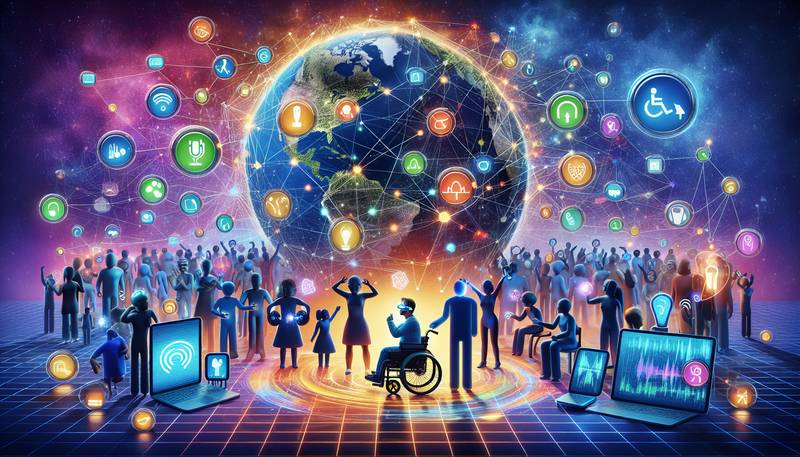Tech for Accessibility: Making the World More Inclusive

Technology has long been hailed as the great equalizer, breaking down barriers and opening up new opportunities for all. But for individuals with disabilities, technology can offer much more. It can be a means to live independently, to access education and employment, and to participate fully in society. This is what is known as "tech for accessibility," and it's making the world a more inclusive place.
The Need for Accessible Technology
In the US alone, there are over 61 million adults living with a disability, and worldwide, the number is estimated to be over 1 billion. Yet, despite this significant portion of the population, the needs of people with disabilities have often been overlooked in the design and development of technology. This has led to a digital divide, where those with disabilities are left behind as the world becomes increasingly reliant on technology.
The Importance of Inclusive Design
Inclusive design is the practice of creating products and services that are accessible to people of all abilities. It's about making sure that technology is designed with the needs of people with disabilities in mind from the very beginning. This means considering things like screen readers for people with visual impairments, closed captioning for people with hearing impairments, and alternative input methods for people with mobility impairments.
Assistive Technology
Assistive technology refers to any device or service that helps individuals with disabilities to perform tasks that they would otherwise be unable to do or would have difficulty doing. This can range from low-tech solutions like magnifiers and large print books to high-tech solutions like voice recognition software and screen readers. Assistive technology has the power to transform lives, enabling people with disabilities to live more independently and participate more fully in society.
Examples of Tech for Accessibility
There are countless examples of tech for accessibility that are making a real difference in the lives of people with disabilities. Here are just a few:
1. Smartphones and Tablets with Accessibility Features
Smartphones and tablets have become an indispensable part of our daily lives. For people with disabilities, these devices offer a range of accessibility features that make them more usable. For example, both Android and iOS devices offer screen readers, magnification, and voice control, making them accessible to people with visual or mobility impairments.
2. Voice-Activated Assistants
Voice-activated assistants like Amazon's Alexa, Google Assistant, and Apple's Siri are becoming increasingly popular. For people with disabilities, these assistants can be especially useful, as they allow for hands-free control of smart home devices, making it easier to control lights, thermostats, and other appliances.
3. Wearable Technology
Wearable technology like smartwatches and fitness trackers are not only trendy but also have the potential to be incredibly useful for people with disabilities. For example, a smartwatch can provide haptic (vibrating) alerts for people who are deaf or hard of hearing.
4. Accessible Gaming
Gaming is a popular pastime for many, but for people with disabilities, it can often be inaccessible. However, there are now more options than ever for accessible gaming, with companies like Microsoft and Sony offering adaptive controllers and other accessibility features.
The Future of Tech for Accessibility
The future of tech for accessibility is bright, with new innovations and advancements being made all the time. In particular, the rise of artificial intelligence (AI) has the potential to revolutionize accessibility. AI can be used to create more intelligent and adaptive assistive technology, such as AI-powered wheelchairs or AI-driven captioning for people with hearing impairments.
Making Technology Accessible for All
As we move forward, it's essential that we continue to prioritize inclusive design and accessibility in technology. This means not only designing new products and services with accessibility in mind but also retrofitting existing technology to be more accessible. It's a collective effort that requires input from people with disabilities, designers, developers, and policymakers.
Conclusion
Tech for accessibility is not just about making technology more usable for people with disabilities. It's about creating a more inclusive world where everyone has equal access to the opportunities that technology provides. With ongoing innovation and a focus on inclusive design, we can continue to break down barriers and make a real difference in the lives of people with disabilities.


